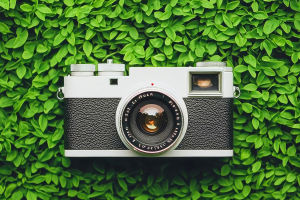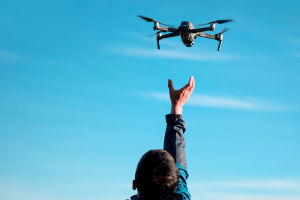In recent years, smartphone photography has exploded in popularity, changing the way we think about and approach photography.
With the rise of smartphones equipped with powerful cameras, anyone with a device in their pocket can capture professional-level photos.
The convenience, accessibility, and creative possibilities that smartphones offer have fundamentally altered the way ordinary people engage with photography. In this article, we'll explore how smartphones are reshaping the photography landscape and redefining how we create and appreciate photos.
From Casual Snaps to Serious Photography
A decade ago, photography was often confined to those who owned expensive cameras and understood the intricacies of aperture, shutter speed, and composition. However, the advent of smartphones with high-quality cameras has democratized photography, allowing anyone to take great photos without needing advanced knowledge or equipment.
One of the most significant shifts in mobile photography is its ability to offer incredible image quality, even in budget devices. Smartphone cameras have become so advanced that in many cases the difference between a professional camera and a phone is almost indistinguishable. Thanks to advanced sensors, improved lenses, and computational photography software, smartphones have become a go-to tool for casual and even professional photographers.
Convenience: Photography at Your Fingertips
One of the primary reasons smartphone photography has gained such widespread popularity is its unparalleled convenience. With smartphones, you always have a camera on hand, making it easy to capture spontaneous moments that might otherwise go unnoticed.
Whether you're traveling, enjoying time with family, or simply walking down the street, your phone allows you to capture and share the moment instantly. The ease of use is another factor—users don't have to adjust settings like ISO or shutter speed manually. The smartphone's automatic mode does all the work, letting the user focus on framing the shot.
Additionally, smartphones provide the benefit of editing tools right at your fingertips. With apps like Snapseed, Lightroom, and VSCO, you can quickly enhance your photos on the go, adjusting brightness, contrast, and saturation, or even applying artistic filters. These tools have made it easier for everyday users to refine their photography and experiment with styles they may not have tried with traditional cameras.
Creative Features Changing the Game
One of the most exciting developments in smartphone photography is the increasing number of creative features available on mobile devices.
Whether it's portrait mode, which simulates a shallow depth of field to blur the background and highlight the subject, or night mode, which helps capture clear photos in low-light conditions, smartphone cameras have revolutionized how we approach photo-taking.
Moreover, the advent of AI-powered features has opened up new avenues for creativity. Many smartphones now come equipped with artificial intelligence that can automatically detect the scene or subject in front of the camera and adjust the settings accordingly. For example, a phone might recognize a sunset and automatically adjust the white balance and color saturation to make the photo more vibrant.
AI can also enhance portraits by smoothing skin tones, improving sharpness, and even applying makeup digitally, making it easier for users to achieve a polished result without needing to know any technical details.
Social Media and Mobile Photography
The rise of social media has further fueled the growth of mobile photography. Platforms like Instagram, TikTok, and Snapchat have made visual content a dominant form of communication. As a result, people have become more conscious of the photos they share, striving to create eye-catching images that stand out in a crowded digital space.
Smartphones are designed with social media sharing in mind, with quick access to apps and the ability to upload photos instantly. The ease of sharing photos has created a new form of photography culture, where immediate access to a global audience motivates users to experiment with different styles and trends. Mobile photography has become a creative outlet for millions of people, allowing them to develop their own unique voice and aesthetic.
Impact on Professional Photography
The rise of mobile photography has not only affected casual users but has also impacted the professional photography world. Many professional photographers are now using smartphones alongside traditional cameras to capture unique perspectives and moments.
For instance, mobile phones are often used in street photography or spontaneous shoots, where carrying large DSLR cameras may be cumbersome.
In addition, the mobile phone's portability allows professionals to document behind-the-scenes moments in real time, without interrupting the flow of the shoot. Some photographers even use smartphones for their Instagram or website content, blending mobile photography with their professional work to create an authentic, relatable online presence.
Despite the growing capabilities of smartphone cameras, traditional professional equipment still holds its place for certain types of photography. DSLR and mirrorless cameras, with their larger sensors and manual controls, are still preferred for situations requiring maximum control over lighting, depth of field, and resolution. However, smartphones have certainly proven to be an invaluable tool for both amateurs and professionals alike.
Smartphone Photography and the Future
As technology continues to advance, the future of smartphone photography looks even more exciting. New developments, such as the integration of 5G technology and the continuous improvement of AI and computational photography, will allow for faster and more seamless photo-taking experiences.
With the upcoming advancements in mobile sensors, cameras will continue to improve in low-light performance, dynamic range, and zoom capabilities, making it even easier for users to capture high-quality images in more varied settings.
Furthermore, as mobile photography becomes increasingly sophisticated, we can expect to see new photography trends emerge. For example, some believe that AR (augmented reality) will play a larger role in how we capture and experience images in the future, providing a more immersive and interactive way to tell stories through photos.
Conclusion: A New Era in Photography
Smartphone photography has opened up new possibilities for both amateur and professional photographers. The ability to take high-quality images with a device that fits in your pocket has transformed how we approach photography, making it more accessible, convenient, and creative.
As smartphones continue to evolve, they will further shape the future of photography, offering new tools and features that enhance both the process and the end result.
Have you embraced smartphone photography? Do you think it has made photography more accessible to the average person? Share your thoughts in the comments below! Whether you're a casual user or a seasoned pro, it's clear that smartphone photography is here to stay and is only going to get better from here.


